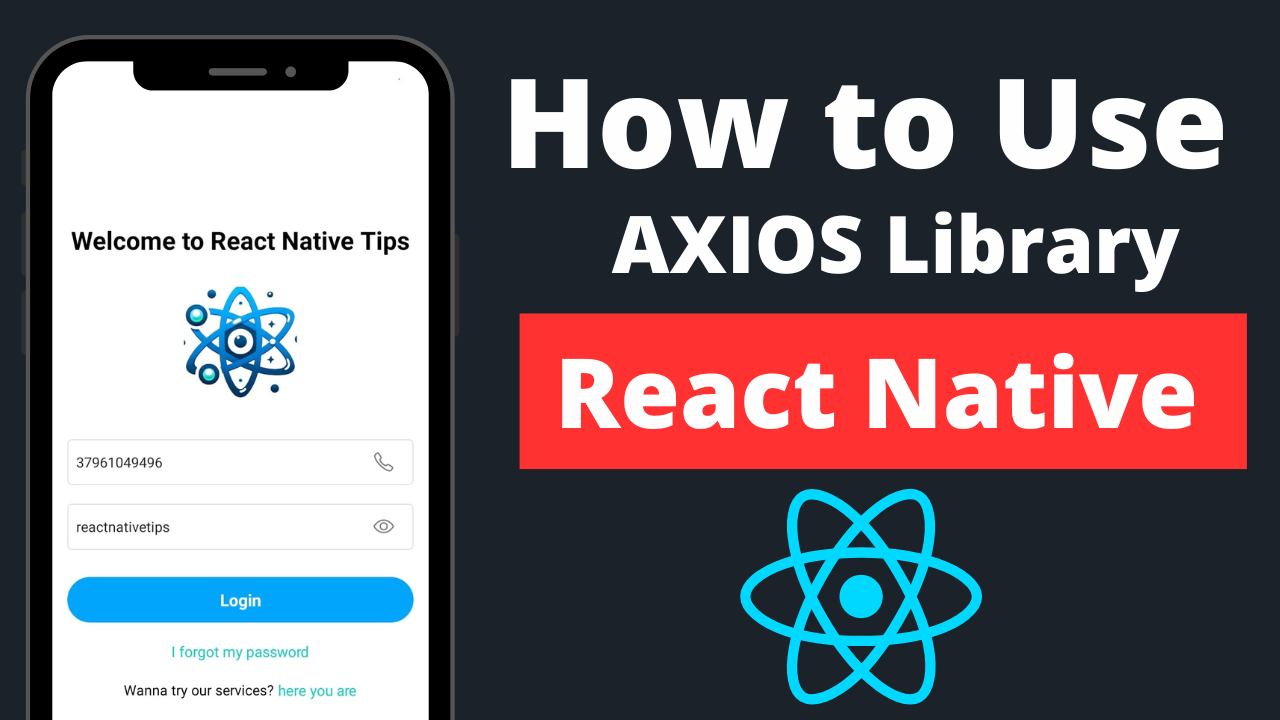In the world of React Native development, effectively communicating with external APIs is a cornerstone for building dynamic and interactive applications. Axios, a promise-based HTTP client, emerges as a powerful tool for handling API requests. This guide will walk you through the steps to seamlessly integrate Axios into your React Native projects, ensuring your apps can fetch, post, and manage data from external sources efficiently.
Introduction to Axios
Axios is a lightweight HTTP client based on promises, facilitating easy-to-manage asynchronous requests. Its broad compatibility with JavaScript environments, including React Native, makes it a go-to choice for developers looking to perform HTTP requests with minimal overhead. Beyond simple GET and POST requests, Axios supports a wide range of HTTP request methods, offers automatic JSON data transformation, and handles request and response interception gracefully.
Setting Up Axios in React Native
Step 1: Installing Axios
Before diving into code, the first step is integrating Axios into your React Native project. Assuming you’ve already set up your React Native environment, open your terminal, navigate to your project directory, and execute one of the following commands:
Using npm:
npm install axios
Or, if you prefer yarn:
yarn add axios
This command adds Axios to your project dependencies, making it available for import in your project files.
Step 2: Making Your First Request
With Axios installed, you’re ready to start making HTTP requests. Import Axios at the top of the file where you wish to use it:
import axios from 'axios';
Here’s a simple example to fetch data from a placeholder API:
axios.get('https://jsonplaceholder.typicode.com/posts')
.then(response => {
console.log(response.data); // Handle the response data
})
.catch(error => {
console.error(error); // Handle any errors
});
Implementing Axios in a React Native Component
Integrating Axios within a React Native component allows you to fetch and display external data. Here’s an example component that fetches and lists posts from a JSON placeholder API:
import React, { useState, useEffect } from 'react';
import { View, Text, FlatList } from 'react-native';
import axios from 'axios';
const PostsComponent = () => {
const [posts, setPosts] = useState([]);
useEffect(() => {
axios.get('https://jsonplaceholder.typicode.com/posts')
.then(response => {
setPosts(response.data);
})
.catch(error => {
console.error('There was an error fetching the posts: ', error);
});
}, []);
return (
<View>
<FlatList
data={posts}
keyExtractor={item => item.id.toString()}
renderItem={({ item }) => (
<View>
<Text>{item.title}</Text>
</View>
)}
/>
</View>
);
};
export default PostsComponent;
This component utilizes the useEffect hook to trigger the Axios GET request when the component mounts. The fetched data is stored in the component’s state and rendered using a FlatList.
Best Practices and Advanced Usage
While the basics of Axios are simple, mastering its advanced features can significantly enhance your React Native applications:
Interceptors
Axios allows you to intercept requests or responses before they are handled by then or catch. This feature is incredibly useful for implementing global request or response logic, such as setting headers or handling errors universally.
Example: Adding an Interceptor
axios.interceptors.request.use(
config => {
config.headers.Authorization = 'Bearer YOUR_ACCESS_TOKEN';
return config;
},
error => {
return Promise.reject(error);
}
);
axios.interceptors.response.use(
response => response,
error => {
if (error.response.status === 401) {
// Handle unauthorized error
}
return Promise.reject(error);
}
);
Concurrency with axios.all
Axios provides helper functions like axios.all to handle concurrent requests. This is useful when your application needs to wait for multiple requests to complete before proceeding.
Example: Handling Concurrent Requests
axios.all([
axios.get('https://jsonplaceholder.typicode.com/posts'),
axios.get('https://jsonplaceholder.typicode.com/users')
])
.then(axios.spread((postsResponse, usersResponse) => {
console.log('Posts:', postsResponse.data);
console.log('Users:', usersResponse.data);
}))
.catch(error => {
console.error('Error fetching data', error);
});
Handling Different HTTP Request Scenarios
Axios can handle various HTTP request scenarios beyond simple GET and POST requests. Here are a few examples:
POST Request with Data
axios.post('https://jsonplaceholder.typicode.com/posts', {
title: 'New Post',
body: 'This is the body of the new post',
userId: 1
})
.then(response => {
console.log('Post created:', response.data);
})
.catch(error => {
console.error('Error creating post:', error);
});
PUT Request to Update Data
axios.put('https://jsonplaceholder.typicode.com/posts/1', {
title: 'Updated Post Title',
body: 'Updated body content',
userId: 1
})
.then(response => {
console.log('Post updated:', response.data);
})
.catch(error => {
console.error('Error updating post:', error);
});
DELETE Request to Remove Data
axios.delete('https://jsonplaceholder.typicode.com/posts/1')
.then(response => {
console.log('Post deleted:', response.data);
})
.catch(error => {
console.error('Error deleting post:', error);
});
Integrating Axios with Redux
For state management in larger applications, integrating Axios with Redux can streamline data fetching and state updates.
Example: Fetching Data with Redux Thunk and Axios
- Install Redux and Thunk
npm install redux react-redux redux-thunk
- Set Up Actions
// actions.js
import axios from 'axios';
export const FETCH_POSTS_REQUEST = 'FETCH_POSTS_REQUEST';
export const FETCH_POSTS_SUCCESS = 'FETCH_POSTS_SUCCESS';
export const FETCH_POSTS_FAILURE = 'FETCH_POSTS_FAILURE';
export const fetchPosts = () => {
return dispatch => {
dispatch({ type: FETCH_POSTS_REQUEST });
axios.get('https://jsonplaceholder.typicode.com/posts')
.then(response => {
dispatch({ type: FETCH_POSTS_SUCCESS, payload: response.data });
})
.catch(error => {
dispatch({ type: FETCH_POSTS_FAILURE, error });
});
};
};
- Create Reducers
// reducers.js
import { FETCH_POSTS_REQUEST, FETCH_POSTS_SUCCESS, FETCH_POSTS_FAILURE } from './actions';
const initialState = {
loading: false,
posts: [],
error: ''
};
const postsReducer = (state = initialState, action) => {
switch (action.type) {
case FETCH_POSTS_REQUEST:
return { ...state, loading: true };
case FETCH_POSTS_SUCCESS:
return { loading: false, posts: action.payload, error: '' };
case FETCH_POSTS_FAILURE:
return { loading: false, posts: [], error: action.error };
default:
return state;
}
};
export default postsReducer;
- Connect to Redux Store
import { createStore, applyMiddleware } from 'redux';
import { Provider } from 'react-redux';
import thunk from 'redux-thunk';
import postsReducer from './reducers';
const store = createStore(postsReducer, applyMiddleware(thunk));
const App = () => (
<Provider store={store}>
<PostsComponent />
</Provider>
);
export default App;
By integrating Axios with Redux, you can manage your app’s state more effectively, ensuring that data fetching logic is well-organized and maintainable.
Conclusion
Integrating Axios into your React Native application not only simplifies handling HTTP requests but also opens up a plethora of possibilities for interacting with external data. By following the steps outlined in this guide, you’re well on your way to enhancing your React Native apps with dynamic content and seamless data integration. As you become more comfortable with Axios, exploring its advanced features will further amplify your app’s capabilities, making your development journey both efficient and enjoyable.

